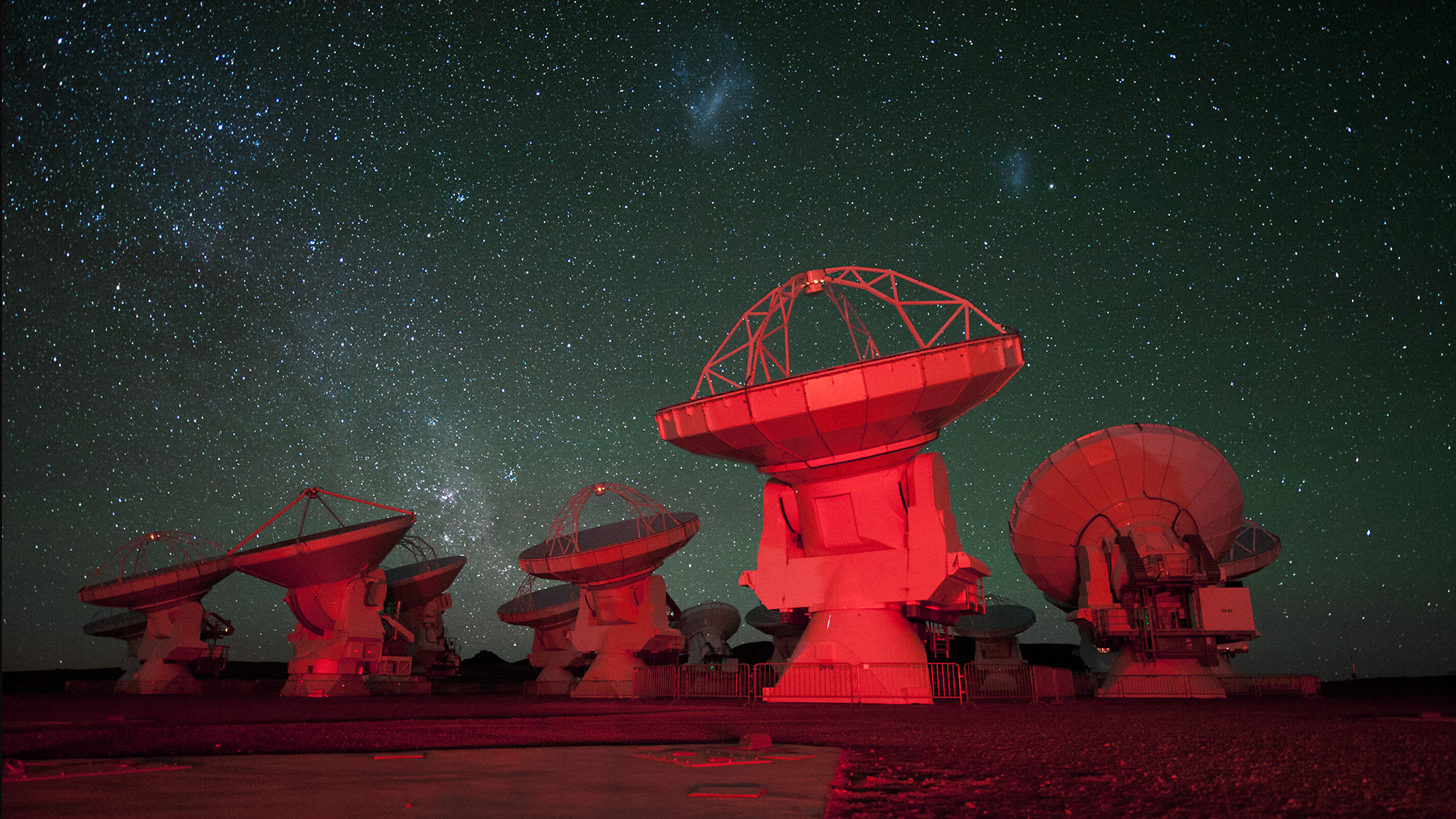The universe is huge, yet astronomers have looked at a few parts of the night sky over and over again. For example, many telescopes—from the Hubble Space Telescope to JWST and beyond—have looked at the Magellanic Clouds, two mini-galaxies in our celestial neighborhood right around the Milky Way. But with all the universe to choose from, why are scientists looking at the same thing so many times?
Turns out, having a lot of information on one example of a celestial phenomenon actually helps astronomers understand the whole picture a lot better, leading to some important scientific progress. The Magellanic Clouds, in particular, are an excellent laboratory to study how galaxies interact with each other—swirling gas and dust between them, morphing their shapes, and even trading whole stars with each other—as well as how stars form.
The two Magellanic Clouds are known as the Large Magellanic Cloud (LMC) and the Small Magellanic Cloud (SMC), and they’re located right in our cosmic backyard. They’re a bit over 150,000 light years away, which seems far until you note that the distant edges of the Milky Way itself extend out over 300,000 light years. Meanwhile, our nearest full-sized neighbor galaxy, Andromeda, is a whopping 2.6 million light years away.
The LMC and SMC are literally intertwined with each other, and with the Milky Way. The so-called Magellanic stream is a wisp of gas moving between the LMC and our home galaxy, and the Magellanic bridge is a similar structure between the LMC and SMC. These rivers of stars and other material are the evidence of gravity at work, siphoning off material from the dwarf galaxies if they dip too close to our behemoth galaxy.
As gravity moves around starstuff, new stars are born from clouds of gas and dust. The LMC and SMC are particularly active hubs of star formation, providing an opportunity for scientists to get up close and personal with how the raw materials for stars circulate in a galaxy. For example, images from the Spitzer Space Telescope, which observed in infrared heat-vision, revealed where new star formation consumes dust in the LMC and where it spits out its leftovers.

Because astronomers can’t make a star in a laboratory and perform neatly controlled experiments, they instead have to look at things in space from as many perspectives as they can. Imagine you need to understand what a sculpture is made of and how it was carved, but you can’t touch it and you can only look at it from across the room—you’ll have to get creative with how you learn about it, taking photos from different angles.
In astronomy, the different “angles” of photos are actually observations in different wavelengths of light. By looking at something with the whole electromagnetic spectrum, astronomers gather more information—different pieces of the very distant puzzle—about whatever space object they’re looking at. For example, infrared observations with JWST showed how dusty star formation is different in the nearby LMC compared to galaxies from the universe’s infancy, while Chandra x-ray observations spotted signs of energetic young stars in the clouds.
There are also a whole host of tricks astronomers play with light to extract even more information without directly interacting with a far away galaxy. Spectroscopy, for example, splits apart light into all its different wavelengths, allowing astronomers to see what kind of light comes from an object and therefore determine what it’s made of; in the Magellanic Clouds (and beyond), this is how astronomers figure out what elements are inside a star. Another technique, polarimetry, splits light into two polarization states (sort of like nice, polarizing sunglasses that block out some of Earth’s bright blue sky light). Astronomers used polarimetry to spy on bright baby stars as they lit up their surroundings in the Magellanic Clouds.

Plus, if astronomers keep revisiting the same object with their telescopes, they get to see how that object changes over time. Although galaxies and stars live on much longer timescales than humans, there are often still interesting differences to note over the course of just a few years. Time passing also has the extra benefit that our technology on Earth just keeps getting better and better—telescopes nowadays can see in far greater detail than they could even twenty years ago.
Astronomers know this is part of the process; a recent project revisiting the Magellanic Clouds was even cleverly named “Yes, Magellanic Clouds Again.” That new look at the same old target revealed some stars that were unexpectedly old, plus some new structures scientists hadn’t spotted before. Even if the Magellanic Clouds have been photographed with all our best telescopes so far, they’re certain to be the focus of another campaign in the future—we’ll always have more to learn, more details to understand and refine when it comes to the mysteries of outer space.

